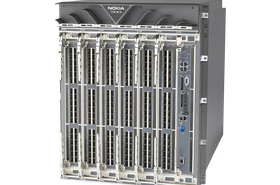Supply chain ecosystems, particularly those within the data center industry, face an unprecedented level of disruption today. The COVID-19 pandemic was a stark reminder of the fragility inherent in global supply chains.
However, the challenges we face today extend far beyond the pandemic's reach. Our supply chains are enmeshed in a web of increasing complexity, demand volatility, geopolitical uncertainties, cyber threats, and shifting customer demands.
The data center industry specifically is undergoing a major transformational shift, driven by several factors: a demand for more efficient energy use, increasing demand for cloud services, and the rise of Edge computing.
Yet, within these challenges lies an opportunity to revolutionize the way we manage supply chains. By adopting a proactive, agile approach, underpinned by robust risk mitigation plans and cutting-edge technology, we can ensure business continuity while fostering responsible, resilient supply chains.
The future of supply chains will be shaped by digitalization, sustainability, and resilience. Data centers particularly are becoming increasingly aware of their environmental impact and taking steps to reduce their carbon footprint.
This has led to a greater focus on sustainable practices and a shift in the industry as a whole toward sustainability not just being good for the environment, but also for business. By reducing energy consumption, data centers can lower operating costs and improve their bottom line.
The digital revolution: A catalyst for transformation
The growing demand for cloud services is another factor driving changes in data center supply chains. As more businesses move their operations to the cloud, data centers must be able to scale up quickly to meet this demand. At Wipro, we are anticipating a shift towards more agile and flexible supply chain models that can adapt swiftly to changing market dynamics and unforeseen disruptions.
And it doesn’t stop there – demands to move data to the edge, closer to the source, is requiring smaller, more distributed data centers. This decentralization presents new challenges for supply chain management, demanding a more complex network of suppliers and logistics providers.
To navigate these challenges, data centers are leveraging technology to enhance supply chain management. Technologies such as blockchain, Internet of Things (IoT), and advanced analytics, will play a pivotal role in creating end-to-end visibility and transparency across future supply chain networks.
AI-driven predictive analytics are already enabling proactive risk management and decision-making across all industries. The combination of blockchain and AI has the potential to revolutionize supply chains, providing unprecedented levels of transparency, traceability, and predictive insights. These technologies will enable companies to create a digital backbone for their supply chains, enabling real-time visibility, proactive risk management, and enhanced decision-making.
Building resilience through collaboration and partnerships
However, as supply chains become more interconnected and globalized, collaboration and trust among supply chain partners will be paramount. In the data center industry, we foresee the emergence of ecosystem-based supply chain models, where partners work closely together to co-create value and drive innovation. This collaborative approach will foster a more resilient and responsive supply chain ecosystem.
Navigating the labyrinth of global network complexity
One of the key challenges facing companies in managing supply chains within the data center industry is the increasing complexity of global networks.
With suppliers and customers located in different parts of the world, it can be difficult to maintain visibility and control over the entire supply chain.
To address this challenge, companies need to leverage digital technologies such as IoT and advanced analytics to gain real-time visibility into their supply chains. By doing so, they can identify potential disruptions early and take proactive measures to mitigate them.
Taming the beast of demand volatility
Another challenge facing many companies in managing supply chains, especially in the data center industry, is demand volatility. With changing customer demands and market dynamics, it can be difficult to forecast demand accurately. To address this, companies need to adopt AI-driven predictive analytics to forecast demand more accurately and optimize inventory levels accordingly. This will help them avoid stockouts and excess inventory, reducing costs and improving customer satisfaction.
Mitigating geopolitical and trade uncertainties
Geopolitical and trade uncertainties are also creating new risks and challenges for companies in managing supply chains. With ongoing conflicts in various regions, companies that rely on these areas for their supply chain operations are facing significant disruptions and uncertainties. Therefore, companies need to proactively assess and mitigate geopolitical risks in their supply chain strategies and develop alternative sourcing options to build resilience in their supply chains.
Embracing secure supply chains: A top priority
In this increasingly regulated business world, secure supply chains are a high priority. Depending on a single supplier for critical components or materials can be a significant vulnerability. Building relationships with multiple suppliers for key items can provide alternatives in case of supply disruptions. Having alternative transportation modes and routes planned can also help navigate around disruptions in logistics and delivery systems. Diversifying suppliers across different regions will further mitigate these risks.
Effective communication is crucial in building strong relationships with suppliers. By jointly identifying and remedying vulnerabilities before they occur, we can make significant strides in cybersecurity and risk management. Joint initiatives in these areas can be a major contribution to a more secure supply chain ecosystem.
Harnessing technology for enhanced decision-making
Lastly, we must harness rapid technological development to improve decision-making and increase visibility in planning. By integrating data across the entire organization and applying AI tools, we can streamline decision-making, increase awareness, quickly identify risks, and take action to limit them. Traditional integrated business planning or sales and operations planning processes can be significantly enhanced and accelerated by the application of AI, resulting in better decision-making, increased revenue, reduced costs, and improved working capital.
The future of supply chain management, particularly in the data center industry, is rife with complexity and risk, but it also teems with opportunity. Businesses must harness emerging technologies like AI, IoT, and blockchain to navigate this intricate landscape. We need to foster collaboration, diversify our suppliers, and proactively manage risks. In doing so, we can transform these challenges into catalysts for innovation and growth. Therefore, let’s seize the moment, adapt and evolve. Let’s revolutionize our approach to supply chain management and drive sustainable growth in an increasingly volatile world.
The future of supply chain management in the data center industry is both complex and exciting. It requires a proactive, agile approach, underpinned by robust risk mitigation plans and cutting-edge technology. But with the right strategies and tools, data centers can revolutionize their supply chains, ensuring business continuity, fostering resilience, and driving sustainable growth in an increasingly volatile world.
As the industry continues to evolve, companies must remain vigilant and adaptable, embracing new technologies and approaches to stay ahead of the curve. Collaboration and partnerships will be critical in building resilient and responsive supply chain ecosystems that can weather any storm.
By taking a proactive approach to risk management and leveraging emerging technologies, businesses can transform challenges into opportunities and drive sustainable growth in the years to come.





